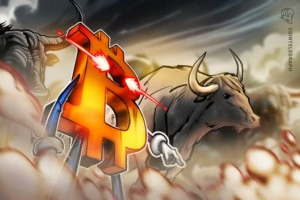The world of cryptocurrency is ever-changing, and Solana’s native token, SOL, is currently facing significant challenges. Recently, the SOL perpetual futures funding rate has turned negative, a sign that traders are increasingly skeptical about the price’s ability to rise. This shift highlights broader concerns regarding Solana’s market share as competition intensifies from blockchain rivals and institutional hesitance.
As of late May, SOL has not reached the coveted $180 mark, prompting traders to question whether a bullish run in the upcoming year is feasible. The demand for leveraged long positions on SOL has plummeted, contributing to a bearish sentiment among market participants. Such a decline is rare in the usually optimistic cryptocurrency landscape and suggests a loss of confidence.
Competition is heating up as Ethereum’s layer-2 ecosystem rapidly expands. Some analysts argue that Solana’s advantages are diminishing in the face of this competition. Nevertheless, Solana continues to innovate with projects like Jito, its largest decentralized application (DApp), which has seen a 12% increase in total value locked (TVL) since January.
- TVL of Jito: 17.92 million SOL
- Annualized staking yield: 7.3%
- Staking ratio: 66.5% of SOL is staked
In stark contrast, less than 30% of Ether (ETH) is staked on Ethereum, and Cardano’s (ADA) staking rate stands at 58%. This strong staking ratio means fewer SOL tokens are available for sale on exchanges, giving some solace to holders.
Despite its struggles, Solana has demonstrated impressive revenue growth, surpassing both Ethereum and Tron. In Q2 of 2025, Solana generated an impressive $271.8 million in revenue, which is 64% higher than Tron and more than double Ethereum’s revenue of $129.1 million. Moreover, Solana’s DApp activity has been robust, with users spending approximately $460 million in fees over a 30-day period.
The ecosystem’s resilience does raise questions about structural weaknesses, particularly amid criticisms related to failed transactions and high activity concentration. However, these issues are often a result of design choices rather than fundamental flaws.
Even with an innovative ecosystem, institutional players remain cautious, citing concerns over Maximum Extractable Value (MEV). Major platforms like Robinhood and Coinbase have reportedly chosen L2 solutions for their superior transaction control, leaving Solana at a competitive disadvantage.
As we look ahead, the critical question for SOL holders is whether Ethereum’s pricing model might shift, allowing Solana to potentially reclaim its former value. Current trends suggest that reaching the $180 milestone may be an uphill battle, as interest in bullish positions dwindles.
In conclusion, while SOL faces headwinds, its strong fundamentals and active ecosystem cannot be ignored. Investors will need to keep a keen eye on market dynamics as Solana navigates these challenging waters.



